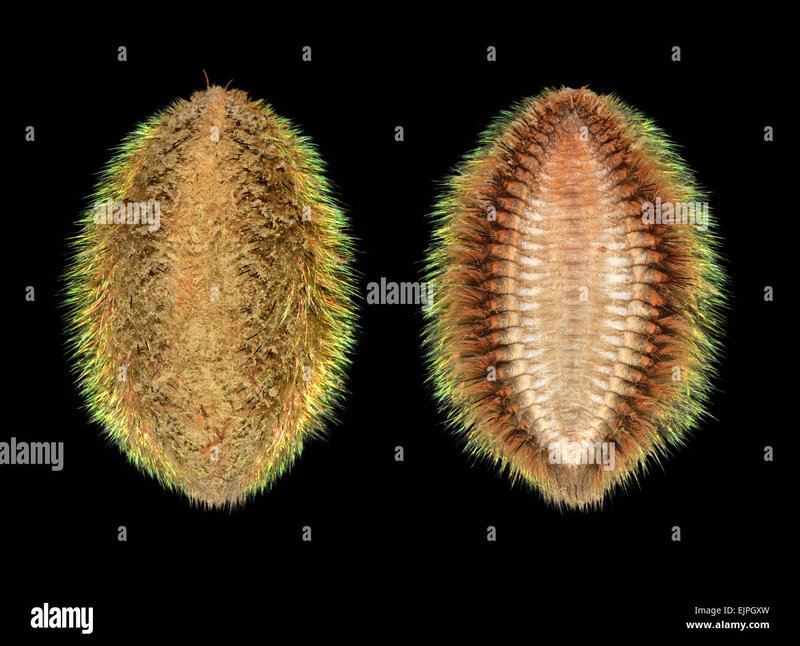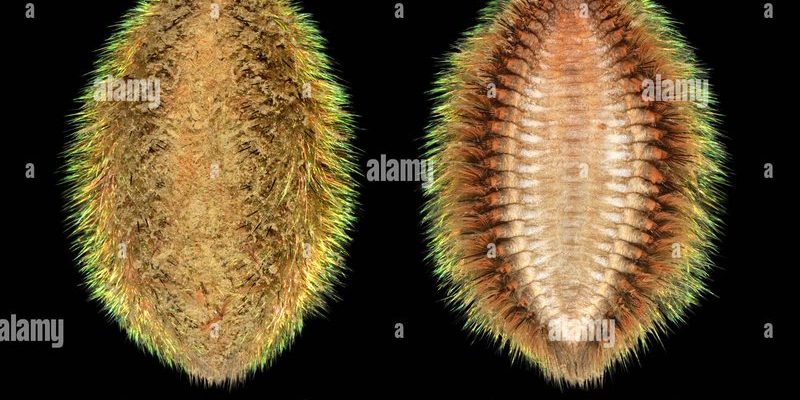
So, how does this particular species interact with other microfauna in its ecosystem? To answer that, let’s dive into the world of marine life—literally! We’ll explore the relationships *Aphrodite aculeata* forms with other small creatures, how it affects the environment, and why these interactions matter. By understanding these connections, we grasp the bigger picture of marine ecosystems and the critical roles played by even the smallest inhabitants.
What is Aphrodite Aculeata?
Before we dig into the interactions, let’s get familiar with *Aphrodite aculeata*. This remarkable worm can grow up to 10 centimeters long and is known for its bright colors and paddle-like appendages, which help it swim in the water. Found primarily in sandy or muddy substrates, it’s often characterized by its segmented body and bristles.
The worm is not just a pretty face; it plays a crucial role in its environment. Think of it as a gardener of the ocean floor. *Aphrodite aculeata* burrows into the substrate, which helps aerate the soil. This action creates spaces for other organisms and promotes nutrient exchange, making the habitat more hospitable for all sorts of marine life. In essence, it’s a small but mighty contributor to the ecosystem’s overall health.
How Does Aphrodite Aculeata Interact With Bacteria?
Bacteria might not be the first thing that comes to mind when we think about ocean life, but they’re incredibly important. These tiny organisms break down organic matter, recycling nutrients back into the ecosystem. *Aphrodite aculeata* has a fascinating relationship with these microbes. When the worm burrows into the seabed, it disturbs the sediment, making it easier for bacteria to thrive.
The interaction is a win-win; as *Aphrodite aculeata* breaks down organic material, it creates a rich environment for bacteria to thrive, which in turn helps decompose waste. This action recycles essential nutrients that other marine organisms rely on, ensuring that life continues to flourish beneath the waves. So, you might say that while *Aphrodite aculeata* is busy working its magic, bacteria are right there, happily getting the job done in tandem.
The Nutrient Recycling Process
Let me explain how this nutrient recycling works. As *Aphrodite aculeata* feeds on detritus (the organic matter that falls to the ocean floor), it collects various particles. During this process, it excretes waste that is rich in nutrients, which becomes a food source for bacteria. This natural cycle fosters a thriving ecosystem where nutrients constantly flow, allowing for a diverse community of organisms.
But it doesn’t stop there. The bacteria that flourish in response to the nutrients from *Aphrodite aculeata* also provide benefits to other marine life. For instance, some small fish feed on these bacteria, making them a critical part of the food chain. This interconnected relationship showcases how even the smallest interactions have significant impacts across the ecosystem.
Interactions With Other Small Creatures
*Aphrodite aculeata* doesn’t operate in a vacuum. It interacts with various other small marine organisms, such as tiny crustaceans and mollusks. These relationships can vary from competition for food resources to mutualism, where both species benefit.
For example, some small crustaceans might share the same habitat as *Aphrodite aculeata*, and while they may compete for similar food sources, they also contribute to the same nutrient cycle. In this dynamic, they ensure that the food web remains balanced. When you think about it, it’s like a potluck—everyone brings something to the table, but they also need to be mindful of what others are serving.
Mutualistic Relationships
One interesting aspect of these interactions is mutualism. In some cases, smaller organisms may find refuge in the burrows created by *Aphrodite aculeata*. These burrows offer protection from predators and currents, creating a safe space for smaller creatures to thrive. In return, these small animals can help aerate the sediment further or contribute to cleaning up the environment by consuming debris and waste.
This cycle of giving and taking demonstrates the beauty of cooperation in nature. Think of it as a neighborhood where everyone looks out for each other and benefits from the shared resources.
The Role of Aphrodite Aculeata in Sediment Disturbance
Another critical interaction to consider is how *Aphrodite aculeata* disturbs sediment. As it burrows and moves through the ocean floor, it creates turbulence in the sediment. This movement can have both immediate and long-term effects on the habitat.
For one, it helps disperse organic materials, making them more accessible to a variety of marine organisms. This is like turning the soil in a garden to help the plants grow better. The more nutrient-rich material that is distributed, the more plants (in this case, different marine organisms) can thrive.
Effects on Marine Plants
You might be wondering how this affects marine plants. Well, those plants, like seagrasses, depend on healthy sediment to anchor themselves and find nutrients. When *Aphrodite aculeata* aerates the soil, it allows roots to access essential elements more easily. In turn, healthy plant life provides shelter and food for countless marine organisms, contributing to the overall stability of the ecosystem.
So, the worm doesn’t just benefit itself; it sets off a chain reaction that helps ensure a thriving environment for various species.
Impact on the Food Web
Let’s take a step back and look at the bigger picture. The interactions of *Aphrodite aculeata* with other microfauna ultimately influence the entire food web. When it contributes to the nutrient cycle and provides habitats for smaller organisms, it serves as a cornerstone for a rich marine ecosystem.
For instance, many fish species rely on smaller creatures that thrive in environments enriched by *Aphrodite aculeata*. This means that a healthy population of these worms can support larger fish populations, which are critical for both ecological balance and human fishing industries.
Food Chain Dynamics
When considering food chains, every player matters. If *Aphrodite aculeata* were to decline in number, it could disrupt the intricate balance of the ecosystem. Fewer nutrients would be recycled, and smaller organisms could struggle to find food. This ripple effect could ultimately lead to fewer fish and, in turn, impact the larger marine predators that rely on them.
So, you can see how the health of one tiny worm has a cascading effect on many other life forms. It’s a reminder that every creature, no matter how small, plays a significant role in the ecosystem.
Conservation and Future Implications
Considering the crucial role of *Aphrodite aculeata*, how do we ensure its future? Healthy marine ecosystems are vital for biodiversity, and protecting these small organisms is equally important. Efforts to conserve their habitats can have significant positive outcomes for the overall health of the ocean.
Conservation strategies, like reducing pollution and protecting coastal environments, can help sustain populations of *Aphrodite aculeata*. These efforts promote a balanced ecosystem that supports not just the worm, but countless other species, too.
Community Awareness
Awareness and education within coastal communities can also play a vital role. Encouraging local organizations and communities to engage in sustainable practices and understand the interconnectedness of marine life fosters a culture of respect for every organism. When we appreciate the contribution of creatures like *Aphrodite aculeata*, we’re more likely to take action to protect them.
In a world where marine environments face numerous threats, ensuring the survival of even the smallest inhabitants is essential to maintain the balance of life in our oceans.
In conclusion, the interactions of *Aphrodite aculeata* with other microfauna illustrate how interconnected and delicate marine ecosystems are. This little worm is a powerful player in nutrient cycling, sediment disturbance, and overall ecosystem health. By recognizing its contributions, we can better appreciate the intricate web of life beneath the waves and the importance of protecting these ecosystems for future generations. After all, every organism, no matter its size, has a role to play in the grand story of life.

